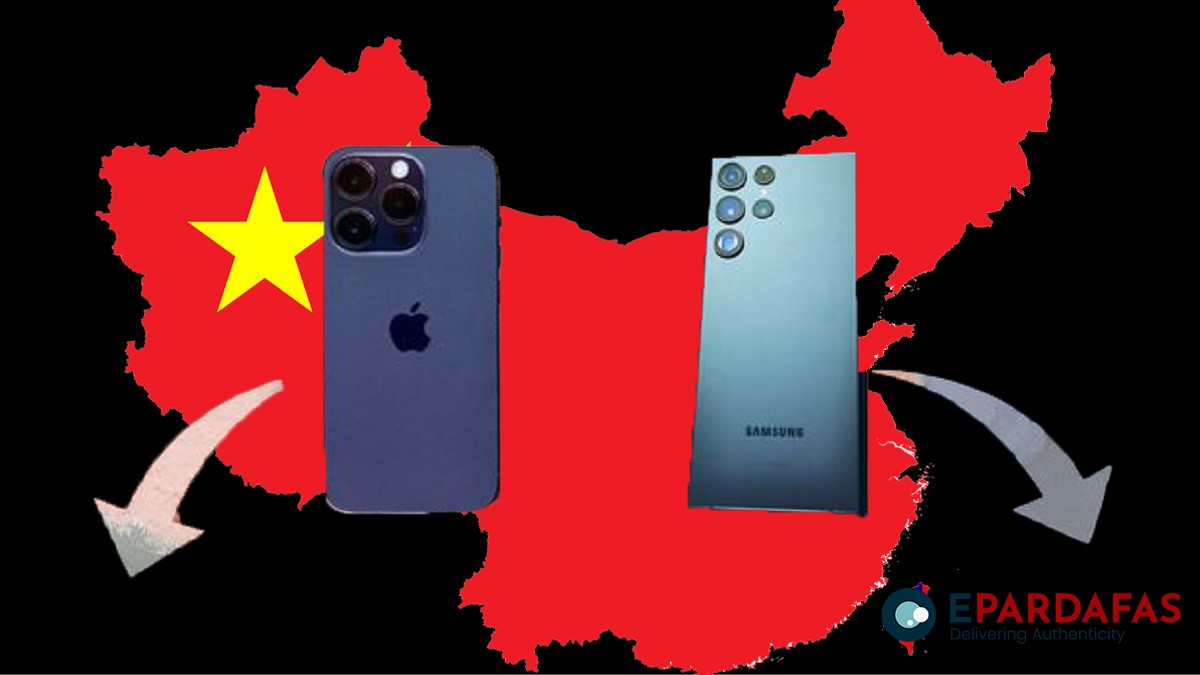
Tech giant Samsung has businesses spread out over China in early 2008. But fifteen years later, the South Korean business has moved the majority of its production facilities from China to other South Asian nations like Vietnam. Apple, the American smartphone giant that had previously claimed to have a symbiotic relationship with China, has begun to take similar actions in recent years to diversify its business. The tough ‘Covid’ legislation in China is serving as a significant driver for Samsung and Apple’s departure as both companies are restructuring their operations to keep up with the fast moving global supply chain.
To lessen its reliance on China, Samsung established a manufacturing facility in the Vietnamese province of Bac Ninh in 2008. Tech analysts said Samsung made a smart decision by doing this since it offered it access to cheaper labor and gave the business a buffer from any conflicts it could have had by operating in China. By the time the Covid epidemic spread globally, In December 2019, Samsung has already relocated a significant portion of its operations outside of China, protecting the electronics major from the ripple effects of a large-scale shutdown in China’s supply chain.
In the last ten years, Samsung struggled to keep up with the rising demand for smartphones and compete with fierce local competition, which caused Samsung’s market share in China to plummet. Since 2013, Samsung has been quickly transferring its smartphone production out of China, and by 2021, 70% of its workers has already relocated to other South Asian nations. The large chip production facility “Samsung Semiconductor” that Samsung had operated in China is still there. Samsung was protected from the significant tariffs imposed on Chinese-made goods by the then-Trump administration thanks to the prompt departure from China. By 2019, Samsung has closed its last phone production facility in China to save itself the difficulties brought on by the continuing dispute between China and the West.
When the epidemic broke out a year later, Apple, another digital titan, followed suit by moving its offices outside of China. Due to China’s rigorous “zero tolerance” Covid regulation, the majority of local businesses suffered significantly, seriously disrupting the supply chain. In these difficult times, Apple was also pushed to the limit and began thinking about shifting its operations to another location where it would not experience similar difficulties.
When local employees’ demonstrations in late 2022 shook one of Apple’s main iPhone production facilities in Guangzhou, China, the company’s plans gathered speed. Stressed out by weeks of rigorous Covid lockdowns, the employees rushed to the streets and damaged the Apple facility.
Apple’s plans to do business in China were shocked by the incident since it no longer felt secure in having so much of its operations concentrated in one location.
While various circumstances pushed Samsung and Apple to relocate their operations outside of China, there were other fresh centres of opportunity emerging in neighboring South Asian nations like Vietnam and India. These nations had anticipated that Samsung and Apple would want to launch new businesses and establish production centers outside of China.
Apple and Samsung were presented with an abundance of grants, tax breaks, and other incentives that they could scarcely refuse, and to top it all off, a highly qualified staff was readily available for their services at a far lower cost.
Samsung produces 50% of its devices in Vietnam and pays 10% income tax there compared to the typical 25% in China. Since it produces iPads and Apple watches in Vietnam, Apple has businesses there as well. 25 of Apple’s top 200 suppliers are from Vietnam, which represents a considerable increase in proportion compared to four years ago. According to Morgan Stanley, 20 to 30% of all Samsung cellphones are now made in India, which is quickly becoming a major worldwide market for the production of smartphones. Near New Delhi, India, Samsung established its biggest smartphone plant in 2022.
With this move, Samsung has been able to significantly expand its market share in India’s fast developing smartphone industry, which is the second-largest in the world after China. With Apple behind at 3.5%, Samsung was able to gain 20% of the market share in India thanks to its early mover advantage. As CEO Tim Cook has mentioned that India is a tremendously fascinating market and is a big goal for him, Apple is now playing catch-up quickly in 2023.
With its recent announcement that it would produce a percentage of the iPhone 14 models in India, Apple has taken a big step toward commercial diversification and a shift away from China. Tech analysts think Apple can easily sell its goods in surrounding Southeast Asian countries by expanding its manufacturing capabilities in India and would have an even more stable supply chain.
Apple intends to ship 40 to 40 percent of its iPhones from India, up from a low single digit percentage in 2022, according to supply chain experts. At home, Apple has also agreed to a multi-billion dollar contract with US chipmaker Broadcom, allowing it to purchase essential chip components from regional suppliers all across the country.
But despite the fact that companies like Samsung and Apple are investing billions to build more factories outside of China, according to analysts, manufacturers would still need to rely on Chinese suppliers. These businesses must carefully manage their operations from a political standpoint and nevertheless are unable to entirely leave China in order to diversify their supply chains. Samsung and Apple are attempting to derisk their operations, but it will take time, and it’s important to comprehend the wider picture of the West vs China.






